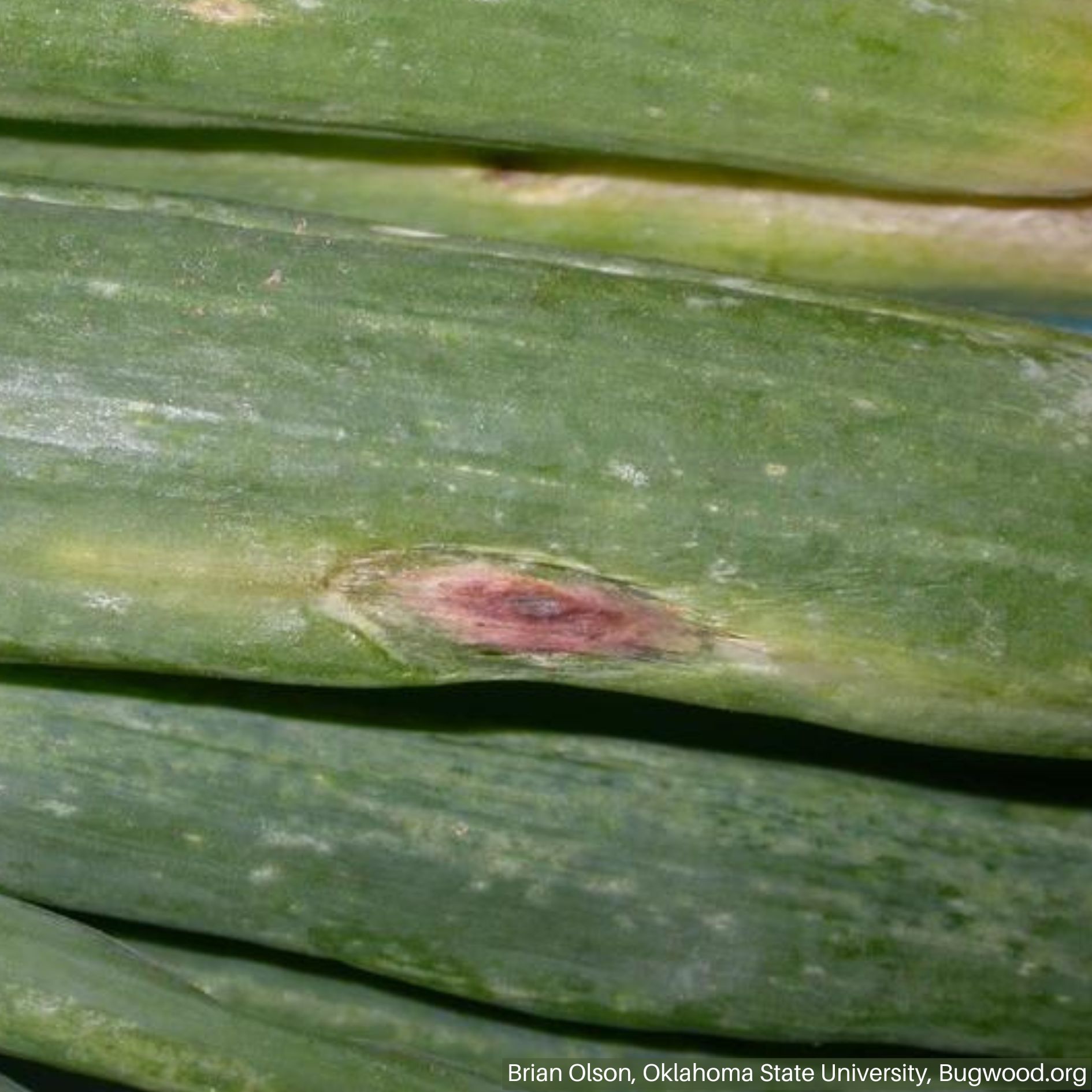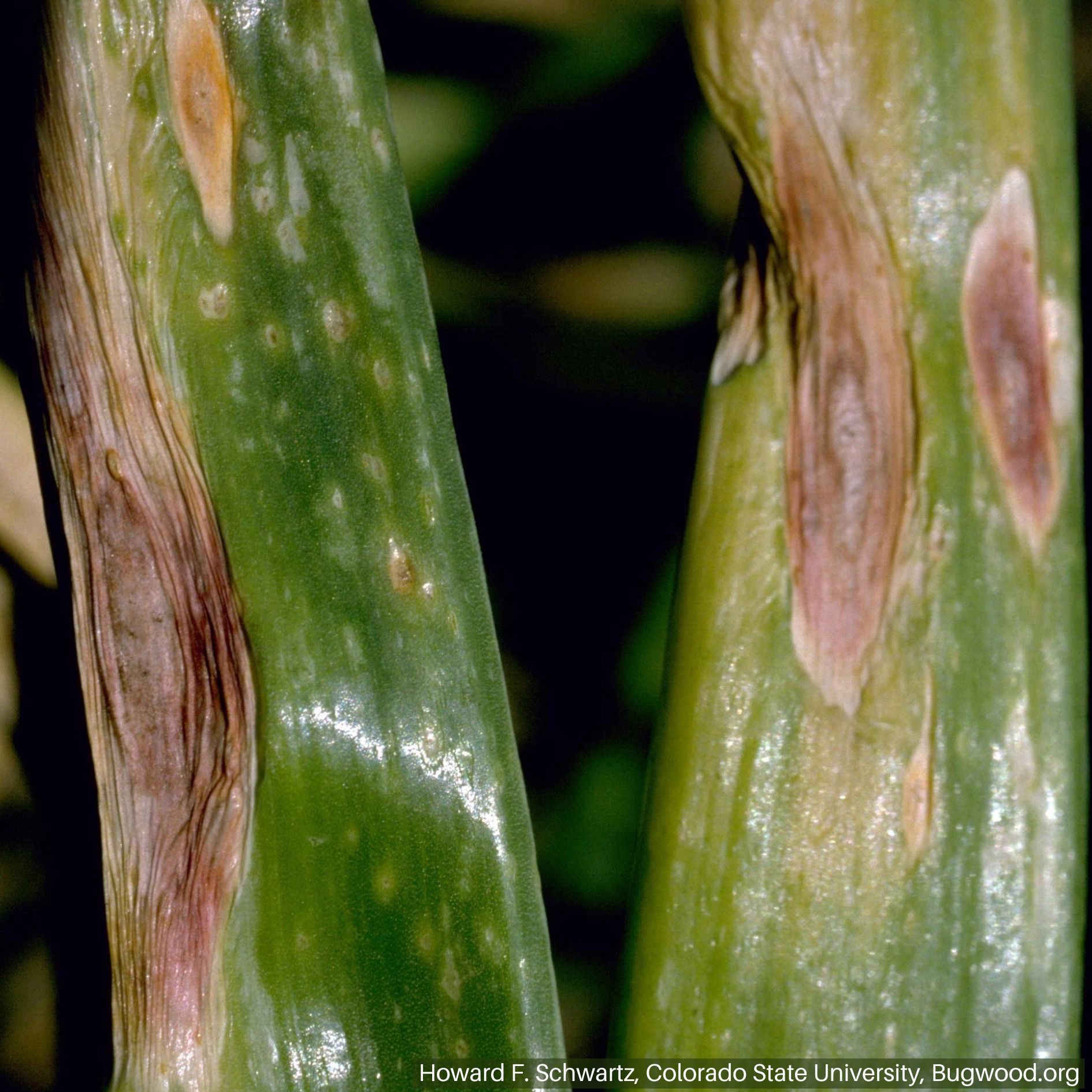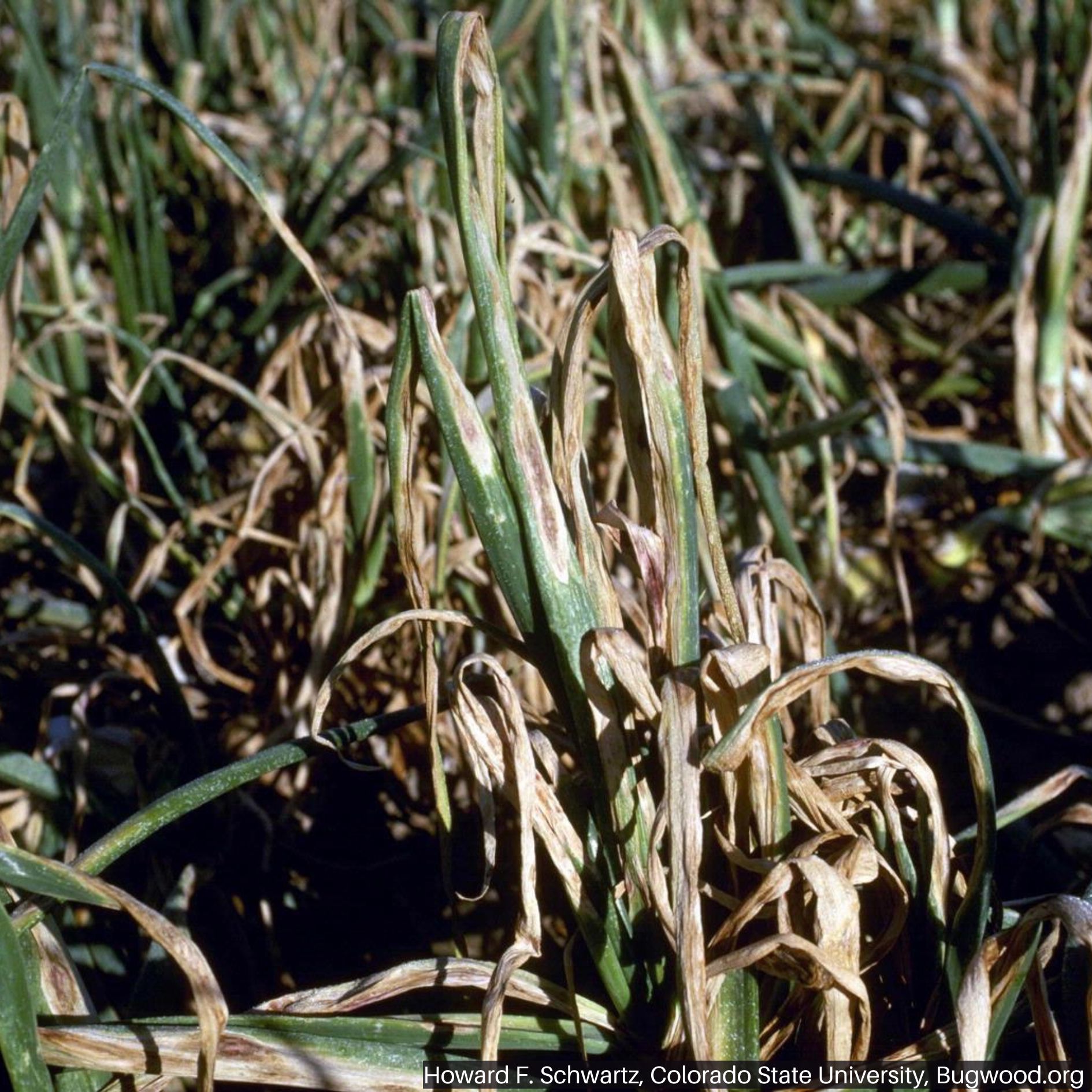Purple Blotch
 Elliptical brown lesion on onion leaf.
Elliptical brown lesion on onion leaf.
 Onions with multiple purple blotch lesions
Onions with multiple purple blotch lesions
HOSTS
- Garlic
- Leeks
- Onion
- Shallot
BIOLOGY
Purple blotch is caused by by the fungus Alternaria porri. It is a concern throughout the entire growing season.
- Infection occurs when fungal spores from nearby plants are blown by wind into onion fields where they infect wounded plants.
- Overwinters in crop residue on or near the soil surface.
- Optimum temperatures for infection are between 77-85°F.
SYMPTOMS
Early symptoms include small brown elliptical spots on leaves, similar to IYSV lesions, which enlarge over time and may result in brown, necrotic streaks. Lesions will eventually turn purple as fungal spores develop. In severe cases, lesions enlarge and coalesce to blight the entire leaf. This pathogen requires wounds caused by other diseases (e.g. botrytis), thrips feeding, or hail, to enter the plant.
GENERAL MANAGEMENT
This disease is occasional in Utah onion production. Older leaves are more susceptible.
- Watch for symptoms starting on older leaves throughout the growing season.
- Rotate crops.
- Avoid excessive nitrogen applications.
- Bury or dispose of culls and other plat debris.
- Application of fungicides
Use fungicides as soon as the disease has been confirmed to prevent further spread. Treatment for purple blotch also controls Stemphylium leaf blight.
Click here for fungicide options for commercial farmers.
Click here for fungicide options for home gardeners.



